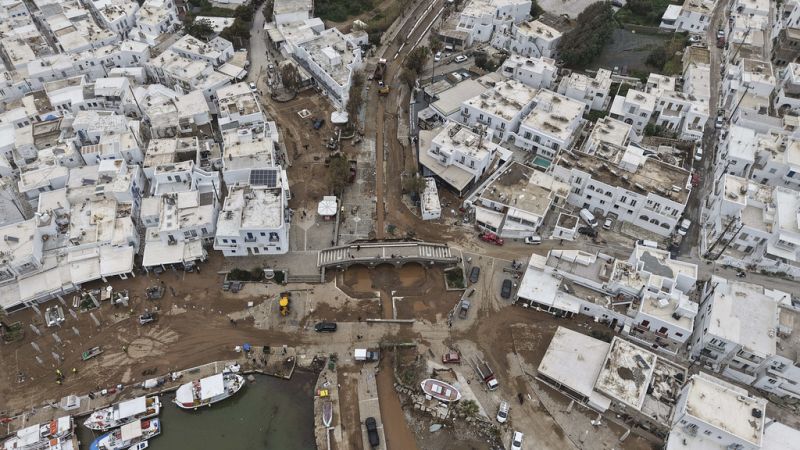
In late March and early April, severe storms struck several Greek islands, leading to significant flooding and damage.
The heavy precipitation during the weather event shows clear signs of being intensified by human-driven climate change, according to a new attribution study.
“The severe storms in Greece align with Intergovernmental Panel on Climate Change (IPCC) projections of increasing extreme weather in the Mediterranean, driven by rising sea surface temperatures,” says Tommaso Alberti, a researcher at Italy’s National Institute of Geophysics and Volcanology (INGV).
“Our analysis shows a clear trend: storms are becoming wetter, amplifying flood risks.”
Greek city records highest rainfall in 24-hour period
On 31 March, the islands of Paros and Mykonos were hit with torrential rains and hailstorms, which submerged streets and swept away vehicles.
Authorities responded by closing schools and restricting traffic to emergency vehicles. Residents and tourists were advised to remain indoors as emergency services conducted rescue operations.
The adverse weather persisted into April, particularly affecting the island of Crete.
The port city of Chania recorded the highest rainfall over a 24-hour period, leading to widespread flooding.
Other islands, including Rhodes, also faced severe conditions, with gale-force winds causing additional destruction.
‘Global warming drives more destructive weather’
Scientists from ClimaMeter, a platform which studies extreme weather events in a changing climate, conducted the rapid study using historical meteorological data from Earth monitoring service Copernicus for the last 74 years.
Researchers compared how similar weather systems behaved during the late 20th century (1950–1986) and recent decades (1987–2023), a period during which the impacts of climate change have become more evident.
The analysis also considered the contributions of natural climate variability phenomena such as El Niño, which is associated with the surface warming of the central and eastern tropical Pacific Ocean.
The research found that storms similar to that which hit Greece in late March are up to 5mm/day (10-15 per cent) wetter now than they would have been in the past.
Sources of natural climate variability may have only partly influenced this change, leading the scientists to conclude that the storm was driven by rare meteorological conditions whose characteristics can mostly be ascribed to human-driven climate change.
“While linking individual events to climate change is complex, the pattern is clear: global warming drives more intense and destructive weather,” Alberti says.
“We urge action, both in mitigation to curb emissions, and adaptation to strengthen infrastructure and preparedness in vulnerable regions like the Mediterranean.”







